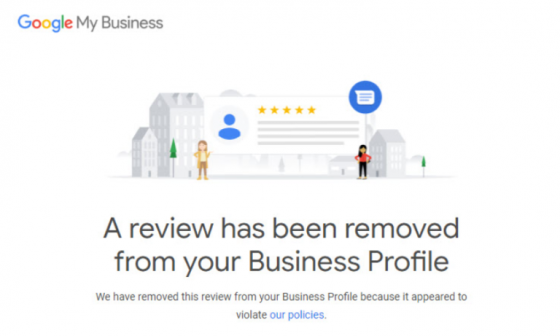Social media customer segmentation is hardly a new concept for marketers, but it’s certainly one that you need to get under your belt.
With innumerable benefits, such as enhancing customer loyalty, improving the cost-effectiveness of marketing campaigns and boosting your brand’s competitiveness, there’s never been a better time to jump on board a trend.
In this article, we’ll dissect what social media customer segmentation is, as well as the best ways to segment your customers. Afterwards, we’ll examine the top nine benefits of this stellar marketing strategy.
What is social media customer segmentation?
Social media segmentation is the process of breaking down and categorizing your social media target audience according to different traits, such as demographics, geographic location, and behavioral habits.
AI in social media is a great tool for doing so, as it can use predictive analysis to create highly personalized and tailored user experiences. It parses social data to figure out the best times to engage with your audience, the type of post that resonates with each group, and how such figures differ according to each demographic.
Implementing a well-thought-out social media strategy alongside AI-driven customer segmentation is essential for maximizing the benefits mentioned below.
The level of specificity in customer segmentation makes it easier to create marketing campaigns and adverts that are hyper-targeted. In turn, this paves the way for marketing success.
Think about it this way. Imagine that you sell a range of outdoor clothing, in varying price classes. Creating adverts that focus on your target audience who favor high-end, high-quality jackets lets you zero in on the customers who respond well to such messaging. The end result is higher engagement and, ultimately, higher sales.
If you’re looking for another way to boost your posts, tools such as Synup Social will help you maximize your social media visibility and engagement. It will analyze your target audience, set clear objectives and ultimately help you reach higher levels of engagement.

(Free to use image sourced from Pexels)
The different types of customer segmentation
To create an effective customer segmentation, you need to know the right way to divide up your audience. Be sure to use the right tool, too; software like Heap gets our vote, as it offers both qualitative and quantitative data in one single digital platform.
Demographic targeting
This segments your audience according to things like age, gender, and location. It’s a simple start, but it really helps in targeting your audience with greater accuracy.
Custom audience creation
Sometimes, you might have specific customer target group criteria, in which case some social media platforms let you create custom audience segments. You can upload customer email lists or website visitor data to create clear audience segments.
This strategy can be used by almost any company. Take marketing strategies for restaurants as an example. With such an over-saturated industry – and customers having seemingly endless options to choose from – identifying your target audience is important for knowing who you’re marketing to. You can use customer email lists or demographics to create highly tailored target groups.
Interest-based targeting
This segments your target groups according to their interests and hobbies, based on their individual online activity and social media engagement. Interest-based targeting helps in addressing your audience through specific topics or industry trends.
Behavioral targeting
You can also track user behavior, including content consumption, browsing habits and previous interactions with adverts. Analyzing this data will let you see any behavioral patterns among users, making it easier to target social media ads their way.
The top nine benefits of social media customer segmentation
Social media customer segmentation is another tool that will help you navigate today’s digital marketing landscape. As each business tries to stand out and dominate the attention economy, this strategy offers innumerable benefits and can help set you apart from the rest. Let’s see what it can bring you.

(Free to use image sourced from Pexels)
-
Better relevance
It goes without saying, but segmenting your audience according to demographics, interests and behavioral patterns allows you to offer content that is more relevant and tailored to their experience. This greatly enhances your ability to capture their attention, which can be the hardest part of the process.
Another effective way of maintaining relevance in the digital sphere is by having the right domain name. This helps you target the right audience in the right location, such as by using .fr or .sg to reach target groups in France and Singapore respectively.
-
Better brand loyalty
Brand loyalty refers to the level to which customers consider themselves committed to a brand. It most likely reflects a higher purchase level of products or services.
Segmenting audiences according to their loyalty allows you to offer extra focus on your most loyal – and, therefore, deserving – customers. This, in turn, can lead to repeat purchases, strong reviews and referrals (user-generated content can be your friend here!).
Social media monitoring tools can be a valuable asset in identifying and nurturing loyal customers. Importantly, you can also use this data to discover and smooth out customer pain points.
Remember that another building block of brand loyalty is good customer service. This can be achieved by using best-in-class equipment, such as virtual PBX systems. This software allows agents to handle calls over the Internet and offers features such as call forwarding, auto attendant and call queues. This software allows agents to be more productive and ultimately, to provide better customer service.

(Free to use image sourced from Pexels)
-
Better conversion rates
With content and adverts being tailored to each specific target group, conversion rates will likely increase. This is because you will be addressing each group’s particular needs, wants, and interests, in turn providing a compelling message that resonates with the target group.
Undoubtedly, one of the best ways to up your conversion numbers is by creating engaging social media posts. Best practices include tracking competitors, monitoring relevant hashtags, and recreating top-performing posts; all these will help your page see increased conversions.
-
Improved cost efficiency
Hyper-targeted advertising is a sure-fire way to make sure that advertising money is spent effectively. This is because content reaches the right audience at the right time, reducing the likelihood of wasted impressions on target groups who are less likely to be swayed.
For those of you on a budget, Google Analytics would be a great tool to start with, given that it’s free, intuitive, and easy to access.
-
Enhanced competitiveness
If you didn’t realize already – everyone is doing customer segmentation, even the big brands. This means that if you want to up your game and stay competitive, social media customer segmentation is a must. It helps you stand out, even amongst the big players.
This is where the use of social media management tools, such as Synup Social, can further enhance your competitiveness. These tools analyze your target audience, set clear objectives, and ultimately help you reach higher levels of engagement.
Another way to enhance your competitiveness is by emphasizing your responsiveness as a business. Social media demands near-constant vigilance, in both posting and responding, and customers are starting to demand this from customer service, too.
By using an online phone number, you can outsource your customer service agents to anywhere in the world, allowing you to offer round-the-clock support. Strategies like customer segmentation and 24/7 customer service are the best way to put yourself ahead of the game; with so many brands out there competing for the top spots, it’s crucial to do everything you can to stay ahead.
-
Better pricing
Customer segmentation can be a useful tool in figuring out which price and offer ranges resonate with your target groups.
For example, bundles may increase purchases for some groups, but not others. Free domestic shipping might resonate with your budget shoppers, but not the high-end ones. Use customer data to gain direct insight into their behavior, after which you can price accordingly.
-
Identify high-value groups
As well as demographics and location, you may want to segment your target groups into cold, warm, and hot audiences. We’ve already examined how customer segmentation can go hand-in-hand with building loyal customers, but it’s worth noting that specifying low-value, or ‘cold’, customers, can help you identify where not to focus your attention.
With the right tools, you can offer even more value to this special subset of customers. For example, UserGuiding not only enables comprehensive customer segmentation, but it also lets you create a unique onboarding experience for each customer based on their data.

(Free to use image sourced from Pexels)
-
Improved inventory management and merchandising
Customer segmentation can offer invaluable insights that can inform your merchandising decisions whilst also ensuring that best-selling products are always in stock. Segmentation can also indicate the best way of displaying or advertising said products. Use the data to figure out what to buy in bulk, as over time this will save costs, increase sales and reduce operating expenses.
-
Enhanced product development
Customer segmentation really can do it all. In this case, dividing customers into smaller groups helps you isolate the product or service features that appeal to each group. You can then use this crucial information to reverse engineer customer preferences and inform new products or services that serve their pain points or wants in a new or interesting way. How smart is that?
Segmentation can also be used in other departments. For example, creating target groups allows your sales team to sell the right product to the right person. If they are using sales call center services, they’ll also enjoy enhanced technology like call transcription software and real-time coaching to help them seal the deal. Seen in this way, segmentation pairs well with technology in helping your departments achieve their best.
Customer segmentation: A better, more cost-effective way of doing marketing
(Free to use image sourced from Unsplash)
As we’ve now seen, social media customer segmentation is a great way of enhancing your brand.
By creating target groups according to demographic, interest or behavioral pattern, you’ll be able to produce laser-focused content and marketing material that correlates with each group’s pain points or wants.
To maximize the impact of this strategy, we suggest combining it with a social media calendar. This handy tool will help you stay consistent, post at the right time and improve workflow. Together with customer segmentation, you’ll be able to create killer, user-centric content that has a powerful effect.


